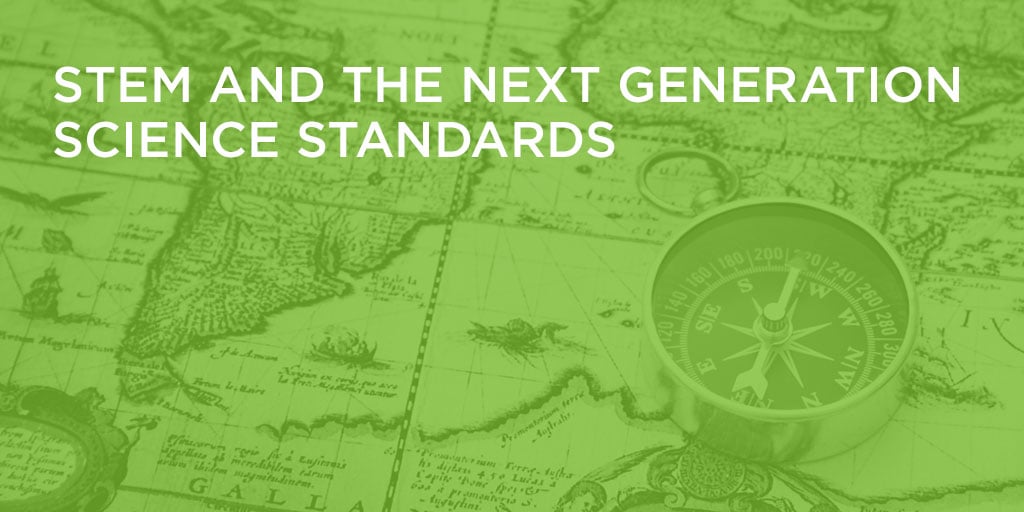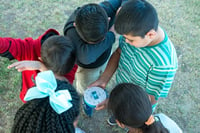
The urgency for STEM education has been fueled by a workforce imperative and the need to supply an increasing demand for STEM jobs in the United States. This coupled with the new NGSS brings into focus the need for educators to understand the benefits to this unique pairing. Think of integrated STEM instruction as a road map and the NGSS as the GPS or compass. Both direct you to the same destination, however while one gives a general route, the other provides a more guided approach to finding your way with the option of many alternate routes—whatever suits you as a teacher and, more importantly, the individual needs of your students. The overlap provides teachers with more room for experimentation with lesson plans and curriculum activities, not additional work.
A high-quality STEM education means that students will develop an in-depth understanding of content and develop skills in communication, collaboration, inquiry, problem solving, and flexibility that will serve them throughout their educational and professional lives. To help develop that high level of quality are the Next Generation Science Standards, which provide a performance expectation to concepts within science.
Combining STEM With NGSS
Within the Next Generation Science Standards (NGSS), there are three distinct and equally important dimensions to learning science—crosscutting concepts, core ideas, and practices. These dimensions are combined to form each standard, which helps us to evaluate performance levels of the students, while also working with the other two to help students build a cohesive understanding of science over time. The use of such standards helps students move towards solving problems using scientific thought and design thinking, which is a perfect fit with the STEM (science, technology, engineering, and math) movement.
The following are some tips for becoming a “pathfinder” using NGSS and STEM road maps:
- Be goal-based to optimize results: Much like the work environment, goals are important when using NGSS and STEM. Teachers need to have their students—at any age level—formulate solutions towards a common goal with student-controlled, inquiry-based activities that engage them from the get-go. NGSS performance expectations offer a tight integration of science and engineering practices as they relate to learning, while also applying core ideas that build upon prior knowledge, making connections to crosscutting concepts.
For example, a challenge of demonstrating how wind can be made to create work has students actively engaged to come up with a plan to optimize the basic windmill process. As students design and engineer their windmill, work-related tasks have a variety of outcomes including generating electricity more efficiently, pumping and moving water, aerating a pond, and more.
- Build on prior knowledge: Students should be supported in building upon their experiences of the world as they develop conceptual understanding of what science does all around them. Science isn’t just something learned in school—it is being actively engaged in practices that encompass the systematic study (much of NGSS) of the structure and behavior of the physical and natural world through observation and experiment.
- Develop a “create with results” thinking map: Have the students review the work to be accomplished and/or completed, then diagram it using graphic systems. This enables students to create a visual representation of knowledge gained in the form of structures in motion and their relationship to one another through a flow of images, diagrams, and models. It could be as simple as using triangles and circles with pathway arrows to show what cause created what effect, and how a slight alteration in the “cause” can result in a different outcome.
- Stand up and be heard: This is a chance for students to defend their work and perspectives about the process. This part is commonly overlooked when working with STEM, with teachers feeling the need to meet as many standards as possible on a particular scientific subject. Students need to understand how their work and discoveries impact the work of others—just like a factory assembly line. This way, everyone has a voice in how to make the product (end result) the best it can be, making it truly a team effort, thus preparing them for 21stcentury work.
What actions can you take to learn more about links between NGSS and STEM?
- Read portions of the “NRC Framework for K-12 Science Education” online for free. It is the detailed vision behind NGSS.
- Join the #NGSSchat twitter community.
- Visit nextgenscience.org to watch a video and read through the information on this valuable website.

How do you incorporate STEM and NGSS in your classroom? Let us know in the comments below! If you’re looking for an effective, engaging way to bring inquiry-based learning to the science classroom, check out the Labdisc portable STEM lab and lesson library, including many aligned to the NGSS standards.





